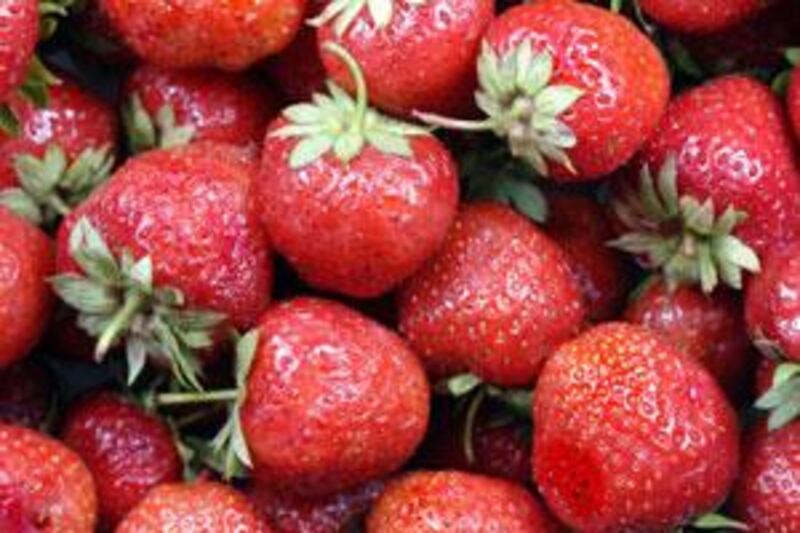When you're feeling run down and unproductive, what do you do? Do you have an early night, book a holiday, pop a few vitamin pills - or do you perhaps start rooting around in the fridge for something ultra-nutritious? Until quite recently, this fourth option - using food as a form of medication for sluggishness and inertia - would have been widely dismissed as cranky nonsense.
Today, however, ultra-nutritious foods are increasingly seen as a way to boost the immune system (in large part because articles in the media like this one have promoted the concept). A worldwide market for nutritional supplements and superfoods has started to elbow its way out of health food stores and onto supermarket shelves. This interesting but controversial trend has arguably met its apotheosis in a chart detailing what it claims are "the top 100 foods for productivity". Originally published on the Food Proof website (www.foodproof.com), the chart has since been picked up by websites and major papers across the world, though many seem unsure as to whether they are publishing it as a guide for health-conscious readers or as an example of the excesses that the superfood movement has stooped to. So how much use is such a chart for maintaining health, and can its advice do any real good or harm?
Casting a quick glance across the list, much of the advice it contains is fairly straightforward. Many of the foods detailed that are widelythought to be healthy are fresh fruit and vegetables, whole grains, low-fat dairy products and small amounts of lean white meat and fish. At the same time, there are occasional inclusions that are bound to raise eyebrows. The injunction to eat pound cake for improved sleep and digestion and to drink diet soda to fill yourself up seem a little nonsensical. Disregarding the soporific claims made for cake, wouldn't eating something so high in fat and low in vitamins run counter to the chart's broader guidelines? And diet drinks may be low in calories, but they are not exactly considered healthy. Such advice is typical of much of the contradictory information diet-conscious people currently have to negotiate.
But beyond its unlikely fondness for cake, the list looks pretty sound. And yet, are these kind of guidelines really helpful? While there can be little harm in anything that encourages people to eat healthily, the approach this sort of information has towards health and well-being has wider implications. The contemporary shift in emphasis away from treating medical problems and towards ensuring people maintain the sort of healthy lifestyle that makes such problems less likely in the first place has much to recommend it. Few would fault the idea of a diet rich in fruit and vegetables - it's when natural produce is claimed to have a quasi-pharmaceutical effect that the ground is less firm.
Take garlic for example, one of the foods listed in the chart as being good for preventing colds and other common illnesses. The bulb has long been believed to have medical benefits; indeed, its use as a folkloric talisman to ward off vampires may be connected to its supposedly extremely healthful qualities. In the present day, garlic been touted as a natural antibiotic and cholesterol reducer and recent studies have indeed shown that garlic may have some positive effect as an antibacterial or anti-fungal agent. Nonetheless, allicin, the active component in the bulb, degrades slowly at room temperature and quickly when heated, so only fresh, raw garlic preserves the substance in its full integrity. Accordingly, eating the stuff cooked in your average meal would have little or no effect. What's more, a randomised trial funded by the US government in 2007 showed no reduction in cholesterol levels in subjects with already moderately high levels in their blood. Claiming the stuff reduces the risk of heart disease - as some nutritionists have - is at best based on an unsubstantiated assumption, and at worst is plain wrong. While garlic may indeed have some positive effects on health, these benefits are still too hazily unproven for a bald statement such as "garlic helps disease prevention" to be strictly reliable.
But do we really have to worry about people eating garlic in abundance before the exact nature of its health benefits has been conclusively proved? At the very worst, eating the stuff is going to do no worse than spoil the eater's breath. And if these foods can indeed have some health-boosting effect, is it not damaging to trash any source that might encourage people to eat them? Well, the short answer is that no one is actually trying to discourage people from eating healthily. Any danger there may be lies in how this information may discourage people from seeking conventional treatment. The focus on diet as the primary source of health and well-being can mask other graver health risks that are not being addressed. Broccoli and tomato, for example, may be an excellent pairing for health - a recent study publicised in Britain's Guardian newspaper found that served together, the pairing inhibited tumour growth in rats. This is interesting stuff, but if people look to such dietary habits as their main defence against cancer rather than regular testing, that might in the long-run prove counterproductive.
That worry is of course a sideshow: you'd have to be deranged to assume carrots rather than chemotherapy are your best way of warding off developed cancer. But there's also something far more insidious about the promotion of foods as productivity-boosters. While nutrition is no doubt important to maintaining good health, the current media focus on it risks obscuring what are arguably more significant factors, such as working and living conditions and social class.
Indeed, the danger of this current emphasis is that it falsely presents personal choice as the sole motor for well-being. While eating too many chips is certainly going to land you with heath problems that are your own fault, there's nothing quite so damaging to health as being poor. In the West, where income levels mean most people have at least some choice over what they eat, heart disease and many cancers still disproportionately affect people on lower incomes.
While culture is a factor in people choosing an unhealthy diet, so are economics: meals rich in fat and sugar often prove to be the cheapest way to fill yourself up. Of course, if all these people ate avocados and hummus daily, their health might improve - but this would be both unlikely and expensive and would probably have far less effect on their health than better pay or housing. To emphasise personal habits alone is to suggest that everyone bears sole responsibility for their own health. Certainly, we can all make the decision not to have that second biscuit. Personal responsibility is of course essential for anyone wanting to maintain good health, when it comes to refraining from overindulgence at least. But too often, the significance of, say, eating dried berries gets coverage without acknowledging how a diet of expensive superfoods is beyond the pockets of many people. When seen in this light, the superfood movement can seem like a major exercise in buck-passing and a means to obscure the most common (and eradicable) root causes of ill health.
All told, any advice that tells you to eat a particular food for a specific outcome should be taken with a pinch of salt (a small one, of course, too much raises your blood pressure). As an utterly unscientific experiment, I've been following the chart's advice and stuffing myself with sunflower seeds, walnuts, aubergines and cod all week. While it's surely done me no harm, I must confess that none of the foods seem to have altered my energy levels or concentration as much as having a good night's sleep. While learning about the relationships between health and diet can be fascinating, focusing un-sceptically on single foods, usually expensive and exotic ones, rarely helps build up a bigger picture of the essentials of healthy living.
So why do such efforts continue to attract so much attention? I suppose we all worry about our health and longevity and are understandably impatient to do anything to make ourselves feel a little more resilient. Most of us lack the scientific know-how or time to fully acquaint ourselves with exactly how foods interact with the body, and are happy to muddle along taking dietary advice on faith in the hope that scientific consensus will one day prove us right. And who knows? Maybe one day the chart below will be proved to be a sacred text for perfect nutrition. In the meantime, where are my pound cake and cantaloupe? I feel like a nap.





